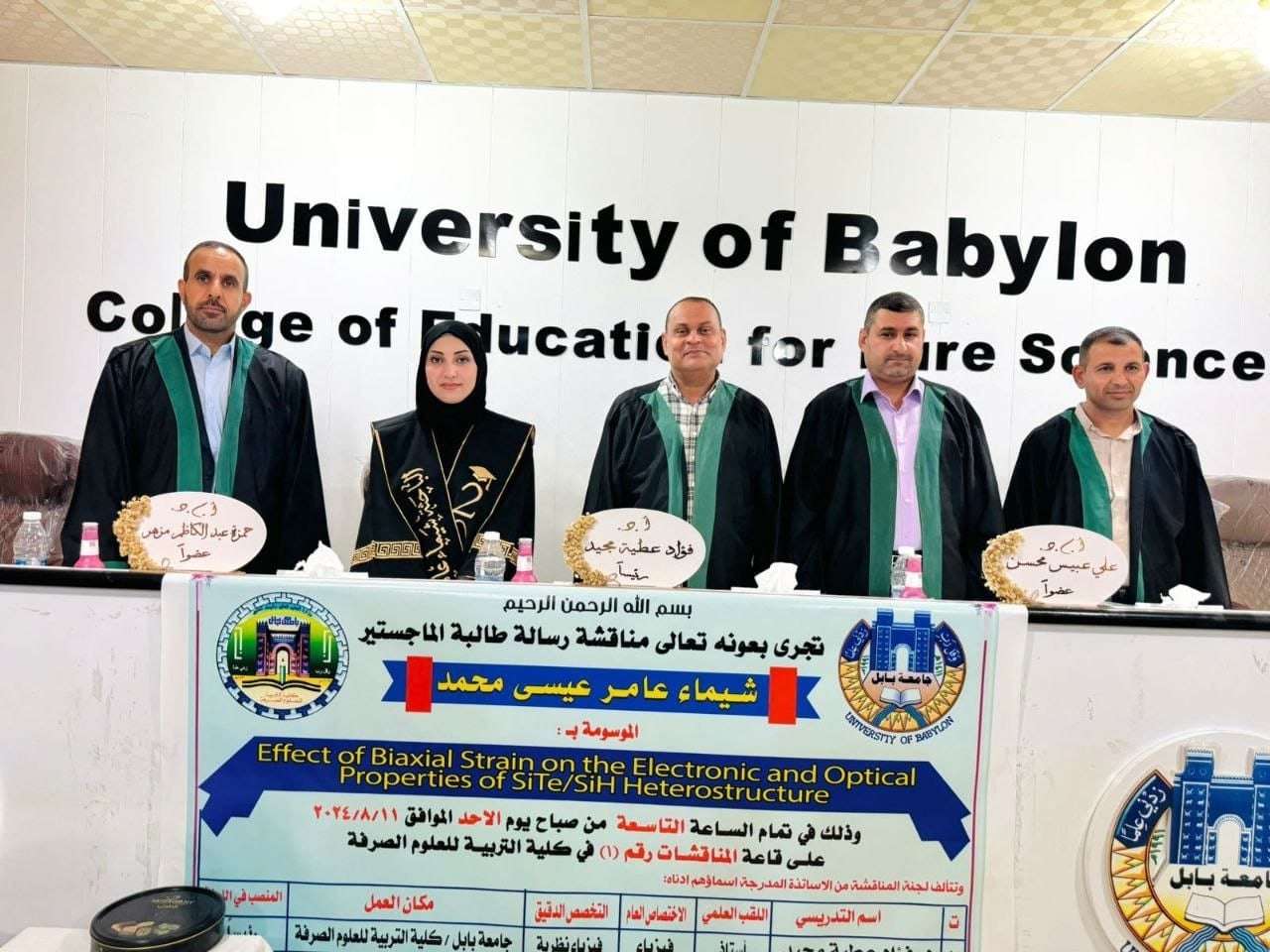Assistant Professor Dr. Hamza Abdul-Kadhim Mazhar, a faculty member in the Department of Physics at the College of Science, University of Karbala, participated as a committee member in the defense of a master’s thesis.
The study, presented by student Shaimaa Amer Issa Mohammed from the Department of Physics at the College of Education for Pure Sciences, University of Babylon, involved the use of density functional theory (DFT). The study demonstrated that two-dimensional monolayers of SiH and SiTe exhibit indirect bandgaps and suitable band edge positions for water splitting. The energy gap values using the Perdew-Burke-Ernzerhof (PBE) method for SiH and β-SiTe monolayers were found to be 2.19 eV and 1.86 eV, respectively. The modified bandgaps using the Heyd-Scuseria-Ernzerhof (HSE06) functional were 2.93 eV and 2.43 eV for SiH and SiTe, respectively.
These results showed that the stable SiTe/SiH heterostructure exhibits type-II band alignment and has an indirect bandgap of 1.725 eV/2.307 eV according to the PBE/HSE06 method. The findings indicated that biaxial strain reduces the bandgap of SiTe/SiH linearly. The effect of biaxial strain can be utilized to tune the SiTe/SiH heterostructure, which enhances the smooth separation of photo-induced carriers. Therefore, this heterostructure is an optimal choice for photovoltaic and photocatalytic applications due to its high light absorption and tunable electronic and photocatalytic properties.






























































